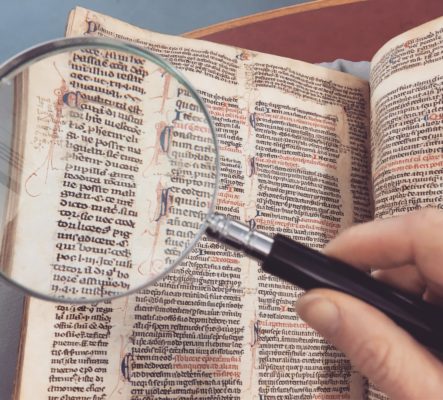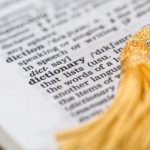What Is This Section?
The ACT Reading section contains 4 passages (or more if there is a comparison) with 40 total questions (10 each) to be completed in 35 minutes. These passages will be about any kind of subject, falling within four categories: Literary Narrative, Natural Science, Social Studies, and Humanities. Sometimes there will be multiple texts in one category, in which case there will be two passages to compare and contrast. The content in each passage is too varied to list, but they will all be an excerpt from an article, paper, book, speech, etc. that was selected especially to test students on the key ideas and details, craft and structure, and integration of knowledge/ideas in each passage. Knowledge in the subjects presented to you is not necessary, however. The only things you need to know about the passages are what they present to you on a base level, how to find evidence for questions after reading, and interpret how and why the author wrote what they wrote. Unlike the SAT, the questions are not in order of the passage (i.e. question 1 might be about the middle of the text while question 2 may involve the first paragraph). Studying for the Reading section will consist of completing passage after passage, reading a lot of challenging material (and understanding it), and reinforcing your critical reading skills.
Critical Reading Skills
Critical reading is a blanket term to group together a large amount of skills that you will use every day, whether it be on your phone, on the computer, with homework, or any other text-based activity. Total comprehension of what you are reading – at any time – is invaluable. You need to ask yourself a bunch of questions as you read any text. Do you read each sentence fully and completely? Do you understand each sentence? What does the flow of ideas and thoughts tell you about the paragraphs and passage as a whole? Why did the author write these words and in this way? Furthermore, there are multiple levels of understanding that you should reflect on as you read – what the text says, what the text implies, and what the text means. In order to obtain a full understanding of the text in those levels, you must apply heavy referential and reasoning skills including but not limited to:
- Locating and interpreting significant details
- Understanding sequences of events
- Making judgements based on evidence
- Evaluating and comparing opinions
- Identifying cause-effect relationships
- Determining the meaning of words/phrases that you don’t know by using context
- Drawing accurate generalizations
- Analyzing the author/narrator’s voice and writing method
- Building understanding when reading texts that assume some background knowledge
- Find or infer the central claim presented and analyze support for said claim
Why Are These Skills Important?
You may think that Reading questions are subjective because anyone can draw their own meaning out of a piece of literature. However, the questions are written by a person who knows exactly what they’re asking of the student and what concept it’s testing. The other answers will have some merit, but one is clearly the correct answer upon careful consideration! Think about math and how only one answer is correct: it’s the same way with reading. There is direct evidence in the passage telling you what answer is the right one. The passages and questions that are put before you in the ACT Reading section are designed like puzzles in that there are many pieces that you must put together to make a comprehensive whole. Once you internalize the main purpose of the passage, the concepts that guide that purpose, and the author’s intent, you can answer any question afterwards. There are actually some tools in the format of the ACT Reading section that will help you do just that. The line references (little numbers to the side of the passage) will indicate which line is which. This sounds obvious, but being able to quickly reference back to a specific line is something that comes with practice and will save you loads of time when finding evidence to support your answers. In the real world, these skills translate directly to understanding instructions/projects in school and work, being able to communicate with others, and being able to read for fun much more effectively.
A Breakdown of Each Passage Type
Literary Narrative
Passages in this category will be fictional narratives from short stories or novels or even memoirs. The passage will typically be a story or some kind of event as told by a third person omniscient narrator or by from the perspective of a character in the story. There may be figurative language, literary devices like metaphors or allusions, or strong emotional beats and tones. A lot of the time, the passage will be a story written decades or centuries ago. In these instances, some students might find it difficult to read the passages in general due to the complicated or dated writing style and word choices the author used.
Quick Tips:
- Look out for the main theme and tone of the passage
- What is the main point of the story? Is there a lesson or moral?
- Determine if there are any questions unanswered by the passage. After all, these are excerpts from full works of literature
- Keep in mind the point of view of the story – who is telling it? Is it first person or third person?
- What are the relationships between characters and between events?
Social Studies
These passages usually consist of fairly straightforward discussions of social science topics like sociology, education, psychology, anthropology, political science, history, and business. The passage will be about the historic events, developments, current happenings, and/or future implications of the subject at hand. Often, the passage will ask you to consider the subject’s perspective (a particular figure like a scientist or historical figure or even a group of people), as well as the author’s point of view. A great example would be a discussion about the logistics and environmental impact of using public transportation.
Quick Tips:
- Be able to paraphrase information in the passage
- Determine the subject, what their point of view is, and how it interacts with others
- What is the point of the passage? How does the subject and author think?
- Think about the meaning of the actions taken by historical figures
- Are there any social implications to the conclusions and events in the passage?
Humanities
Passages in this category are typically from personal essays, memoirs, speeches, or letters and are often personal and written from a first-person point of view. Given that they’re from someone’s perspective, there will be an opinion or stance taken on some topic such as: art, ethics, film, language, music, philosophy, and literature. You are expected to examine the author’s viewpoint on the issue, interpreting their opinions and recognizing their assumptions, bias, and background while evaluating the implication and meaning behind the author’s knowledge and statements. A good example would be a speech by Abraham Lincoln.
Quick Tips:
- What is the issue at hand and why is it important to the author?
- Always keep the author’s point of view in mind as it colors the entire passage
- Try not to form or insert your own opinion on the matter unless a question prompts you
- Infer what the author might think about another issue or person’s opinion
- Think about the function and development of the author’s argument. What is the point?
Natural Science
The passages categorized as natural science are slightly detailed discussions about science subjects, often involving some kind of research or experiment. Topics can range from those you may have studied in school like biology, chemistry, physics, anatomy, ecology, or geology all the way to more advanced topics like medicine, technology, physiology, astrology, or meteorology. You don’t need to have a science background to understand the passages; the only things you need, as with the rest of the passage types, are strong reading comprehension skills. Many of the questions will tend to gear more towards details and concrete statements that you can back up with evidence, much like social studies passages. A fine example of a natural science passage would be a study about brain activity in developing young children.
Quick Tips:
- What kind of science passage is this? A discussion, research, or experiment?
- Keep the conclusion in mind and make sure it can be supported by evidence
- What are the implications of the conclusion?
- If you don’t know a word or phrase, underline it and try to use context clues
- Read each answer carefully as there may be one or two word differences
Types of Questions
- Big picture
- The main subject/theme of the passage or the narrator’s overall point of view
- Require you to look at the passage holistically rather than focusing on one specific section
- Think of the central claim, main purpose, or summary of the passage as a whole
- On average about one per passage (4 questions)
- Little Detail
- Small piece of factual information in a passage
- Identify sequences of events and relationships
- The most straightforward because they are completely literal
- Generally have a line reference or refer to a particular part of the passage
- Find the correct evidence to support your answer
- Don’t take too long on these!
- On average takes up a little under half the exam (12-21 questions)
- Vocabulary in Context
- The meaning of a word in the context of the passage.
- Might also give you something in the passage to reference and then ask you to choose the vocabulary word that best describes it.
- Often uses words in non-typical way
- Answer is the word that maintains meaning, structure, and tone of the sentence
- Plug the answer choices into the sentence/line referenced
- On average there is maybe one per passage (3-4 questions)
- Structure and Function
- How a paragraph or phrase function in relation to the whole passage
- How the argument/point of the passage develops
- How the author structures the passage
- Think about syntax, idea flow, and what the main point of the passage is
- On average makes up nearly a fourth of the exam (7-10 questions)
- Inference
- Infer information/points based on evidence and reasoning not explicitly stated
- Draw conclusions about arguments and comparisons
- Ask what the author’s tone is and why things were stated in a certain way
- Identify how a character/person feels about another
- Determine implied cause and effect relationships
- On average takes up more than a tenth of the exam (3-6 questions)
General Exam Tips
- Read each passage carefully, making sure to understand the main purpose
- Break down each sentence you don’t quite get, drawing the meaning from them
- Utilize process of elimination
- Read questions and their answers carefully and completely
- Scan the passages, reading in the most comfortable order (leaving the hardest for last)
- Write down notes, mark evidence, and always read every part of the passages!
- If you have multiple texts in one passage, answer the questions about the first after reading the first, then move onto the second text and its questions
- If there is a question you’re not sure about, mark it and come back to it. No sense dwelling on a question for an overly long time
- Find what your weakness is – questions or time management – and start studying by taking Reading section after Reading section, timing yourself
- Try to spend just around 4 minutes on reading passages and the rest on questions
- Keep track of the time, but don’t rush! Nothing wastes more time than hurrying
- Don’t move on from a passage until you finish it
- Don’t leave any questions blank
- Stay on top of bubbling – if you skip around, make sure you bubble the right questions!
- Expand your vocabulary before the exam
- Practice, practice, practice







